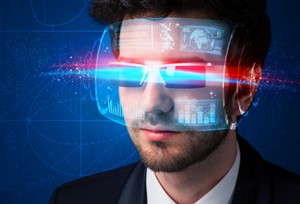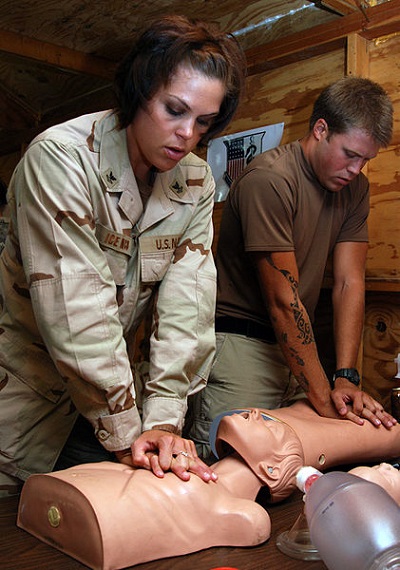The uber popular streaming video site has unveiled its new paid subscription service and future plans.
The YouTube Space in L.A. played host to a number of announcement about the website and its mobile app, and now there have been announcements with regards to two interesting new features that will be added to the streaming service’s Android application.
The announcement stated that virtual reality video would be added to the YouTube Android app.
This provides V.R. with the largest platform that it has ever had. The mobile app already supports virtual reality video, which is a format that provides viewers with 360 degree perspectives of the videos which the company has said makes the experience more realistic. In order to view one of these videos, a user must simply play the virtual reality video on the application, then select the VR mode button. The phone must then be placed in the “Cardboard” device from Alphabet Inc. That gadget is what provides the actual viewing experience in virtual reality.
The Cardboard viewer can be used to upload virtual reality content to be viewed through the YouTube mobile app.
 According to YouTube, at the time of the launch of the service, there were about a dozen videos available in this format, including one that was based on content from the Hunger Games movies. YouTube has also announced that a more limited virtual reality experience would be available using Cardboard simply by playing the rest of the videos in the streaming site’s massive library. Those videos would give the type of experience that would be expected from an IMAX theater.
According to YouTube, at the time of the launch of the service, there were about a dozen videos available in this format, including one that was based on content from the Hunger Games movies. YouTube has also announced that a more limited virtual reality experience would be available using Cardboard simply by playing the rest of the videos in the streaming site’s massive library. Those videos would give the type of experience that would be expected from an IMAX theater.
According to the Immersive Technology Alliance executive director, Neil Schneider, 3D video was first introduced by YouTube in 2009 and the company was an early HD video adopter. For that reason, the VR trade organization’s executive director said that “It’s not surprising they would take the angle of adding virtual reality”.
Schneider also stated that people should be able to anticipate an influx of high quality content, but also said that it would likely be quite difficult to create amateur content since it is usually quite expensive to purchase the equipment needed to make VR content. It will be interesting to see how this changes the experience provided by the YouTube mobile app.
The instructions have now been updated by the Red Cross and American Heart Association.
If most people were asked what to do in case of an emergency, the answer would be to dial 9-1-1, and while this should be easier than ever before with the penetration of mobile technology throughout virtually every part of the population, when someone suffers a heart attack, many people still freeze up and delay before this critical step is taken.
The CPR guidelines have now been updated so that mobile technology plays a part when it can.
More specifically, the American Heart Association and Red Cross have pointed out that mobile technology can allow bystanders to take part in helping out in the situation. The goal is to save more lives. According to the new guidelines, after 9-1-1 has been called, the phone can be used in its speaker function and rested down so that the individual can still speak to the operator, regardless of whether or not their hands are busy.
The goal is to use mobile technology to help to reduce some of the fear felt by people making the call.
 According to Dr. Lawrence Phillips from the American Heart Association, “Some of that fear is resolved when you hear a voice telling you what to do and what the next step is.” It also points out that the individual doesn’t actually need to be trained in CPR to be able to help out in an emergency situation in which someone has had a heart attack.
According to Dr. Lawrence Phillips from the American Heart Association, “Some of that fear is resolved when you hear a voice telling you what to do and what the next step is.” It also points out that the individual doesn’t actually need to be trained in CPR to be able to help out in an emergency situation in which someone has had a heart attack.
Some of the guidelines also point out that there are many mobile apps that can be used to help cardiac arrest victims so that assistance can begin as rapidly as possible. One example of a very beneficial way in which mobile devices can help when someone has gone into cardiac arrest is in the form of a non-profit called PulsePoint. That organization is currently in over 1,300 different communities.
It works when someone dials 9-1-1 for a situation that sounds like a cardiac emergency. When this happens, it alerts anyone nearby who has CPR training and who has the mobile app on their smartphone. This use of mobile technology can help to ensure that someone trained to provide CPR will be there as quickly as possible. Beginning CPR early can double or triple the chances of survival for someone who is suffering a heart attack. The app can also show people where the nearest automated external defibrillator can be found.
 According to YouTube, at the time of the launch of the service, there were about a dozen videos available in this format, including one that was based on content from the Hunger Games movies. YouTube has also announced that a more limited virtual reality experience would be available using Cardboard simply by playing the rest of the videos in the streaming site’s massive library. Those videos would give the type of experience that would be expected from an IMAX theater.
According to YouTube, at the time of the launch of the service, there were about a dozen videos available in this format, including one that was based on content from the Hunger Games movies. YouTube has also announced that a more limited virtual reality experience would be available using Cardboard simply by playing the rest of the videos in the streaming site’s massive library. Those videos would give the type of experience that would be expected from an IMAX theater.
 According to Dr. Lawrence Phillips from the American Heart Association, “Some of that fear is resolved when you hear a voice telling you what to do and what the next step is.” It also points out that the individual doesn’t actually need to be trained in CPR to be able to help out in an emergency situation in which someone has had a heart attack.
According to Dr. Lawrence Phillips from the American Heart Association, “Some of that fear is resolved when you hear a voice telling you what to do and what the next step is.” It also points out that the individual doesn’t actually need to be trained in CPR to be able to help out in an emergency situation in which someone has had a heart attack.